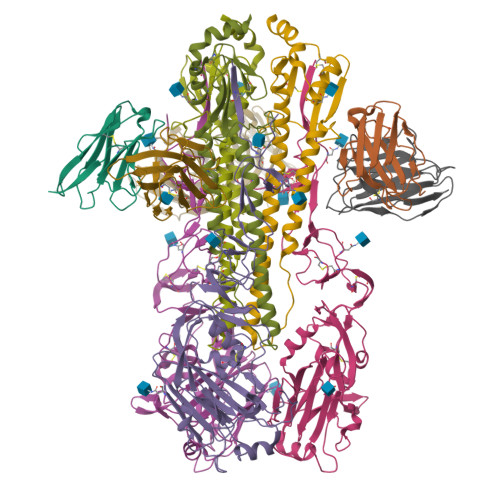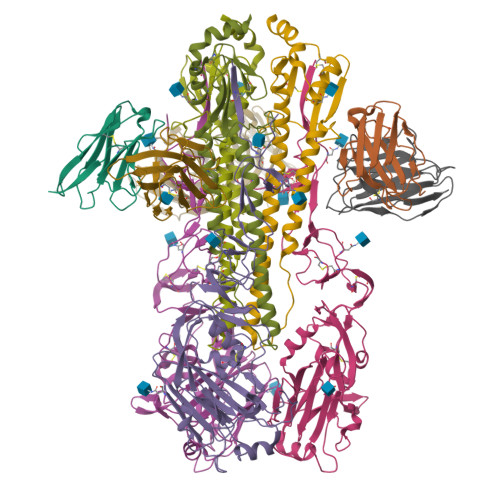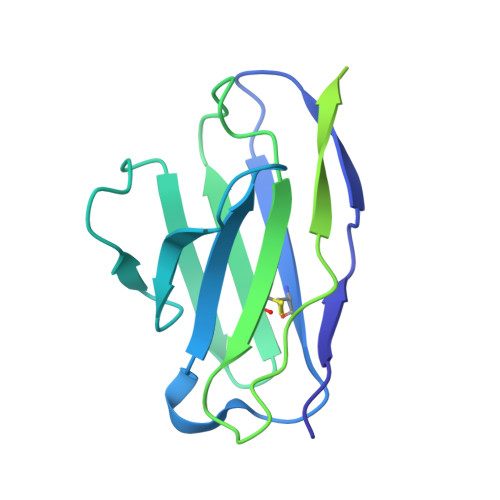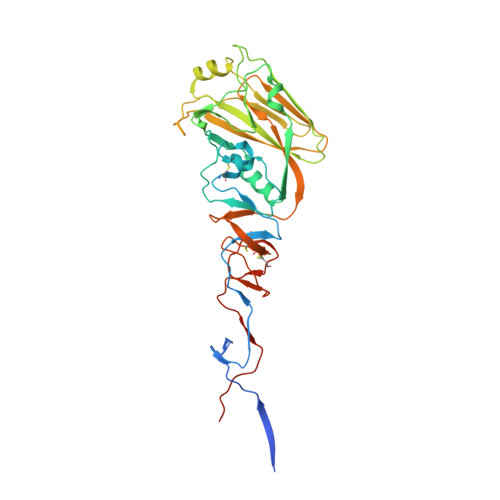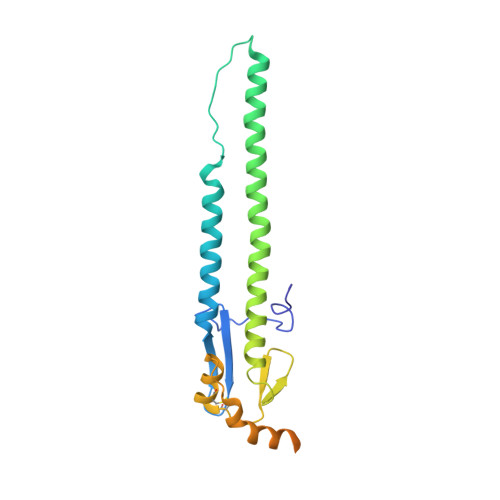A single residue in influenza virus H2 hemagglutinin enhances the breadth of the B cell response elicited by H2 vaccination.
Andrews, S.F., Raab, J.E., Gorman, J., Gillespie, R.A., Cheung, C.S.F., Rawi, R., Cominsky, L.Y., Boyington, J.C., Creanga, A., Shen, C.H., Harris, D.R., Olia, A.S., Nazzari, A.F., Zhou, T., Houser, K.V., Chen, G.L., Mascola, J.R., Graham, B.S., Kanekiyo, M., Ledgerwood, J.E., Kwong, P.D., McDermott, A.B.(2022) Nat Med 28: 373-382
- PubMed: 35115707
- DOI: https://doi.org/10.1038/s41591-021-01636-8
- Primary Citation of Related Structures:
7L0L, 7MFG - PubMed Abstract:
Conserved epitopes on the influenza hemagglutinin (HA) stem are an attractive target for universal vaccine strategies as they elicit broadly neutralizing antibodies. Such antibody responses to stem-specific epitopes have been extensively characterized for HA subtypes H1 and H5 in humans. H2N2 influenza virus circulated 50 years ago and represents a pandemic threat due to the lack of widespread immunity, but, unlike H1 and H5, the H2 HA stem contains Phe45 HA2 predicted to sterically clash with HA stem-binding antibodies characterized to date. To understand the effect of Phe45 HA2 , we compared the HA stem-specific B cell response in post hoc analyses of two phase 1 clinical trials, one testing vaccination with an H2 ferritin nanoparticle immunogen ( NCT03186781 ) and one with an inactivated H5N1 vaccine ( NCT01086657 ). In H2-naive individuals, the magnitude of the B cell response was equivalent, but H2-elicited HA stem-binding B cells displayed greater cross-reactivity than those elicited by H5. However, in individuals with childhood H2 exposure, H5-elicited HA stem-binding B cells also displayed high cross-reactivity, suggesting recall of memory B cells formed 50 years ago. Overall, we propose that a one-residue difference on an HA immunogen can alter establishment and expansion of broadly neutralizing memory B cells. These data have implications for stem-based universal influenza vaccination strategies.
Organizational Affiliation:
Vaccine Research Center, National Institute of Allergy and Infectious Diseases, National Institutes of Health, Bethesda, MD, USA. sarah.andrews2@nih.gov.








